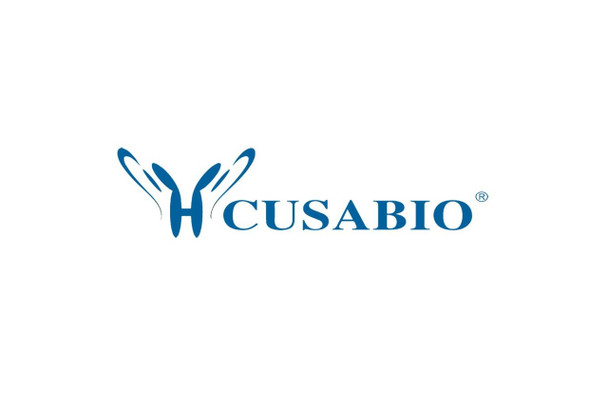Cusabio Human Recombinants
Recombinant Human Transcription factor E2F6 (E2F6) | CSB-EP007347HU
- SKU:
- CSB-EP007347HU
- Availability:
- 13 - 23 Working Days
Description
Recombinant Human Transcription factor E2F6 (E2F6) | CSB-EP007347HU | Cusabio
Alternative Name(s): E2F 6; E2F binding site modulating activity protein ; E2F transcription factor 6; E2F transcription factor 6 isoform 1; E2F-6; E2F6; E2F6_HUMAN; EMA; MGC111545; Transcription factor E2F6
Gene Names: E2F6
Research Areas: Epigenetics and Nuclear Signaling
Organism: Homo sapiens (Human)
AA Sequence: MSQQRPARKLPSLLLDPTEETVRRRCRDPINVEGLLPSKIRINLEDNVQYVSMRKALKVKRPRFDVSLVYLTRKFMDLVRSAPGGILDLNKVATKLGVRKRRVYDITNVLDGIDLVEKKSKNHIRWIGSDLSNFGAVPQQKKLQEELSDLSAMEDALDELIKDCAQQLFELTDDKENERLAYVTYQDIHSIQAFHEQIVIAVKAPAETRLDVPAPREDSITVHIRSTNGPIDVYLCEVEQGQTSNKRSEGVGTSSSESTHPEGPEEEENPQQSEELLEVSN
Source: E.coli
Tag Info: N-terminal GST-tagged
Expression Region: 1-281aa
Sequence Info: Full Length
MW: 58.8 kDa
Purity: Greater than 90% as determined by SDS-PAGE.
Relevance: Inhibitor of E2F-dependent transcription. Binds DNA cooperatively with DP proteins through the E2 recognition site, 5'-TTTC[CG]CGC-3'. Has a preference for the 5'-TTTCCCGC-3' E2F recognition site. E2F6 lacks the transcriptional activation and pocket protein binding domains. Appears to regulate a subset of E2F-dependent genes whose products are required for entry into the cell cycle but not for normal cell cycle progression. May silence expression via the recruitment of a chromatin remodeling complex containing histone H3-K9 methyltransferase activity. Overexpression delays the exit of cells from the S-phase.
Reference: "Unusual proliferation arrest and transcriptional control properties of a newly discovered E2F family member, E2F-6." Gaubatz S., Wood J.G., Livingston D.M. Proc. Natl. Acad. Sci. U.S.A. 95:9190-9195(1998)
Storage: The shelf life is related to many factors, storage state, buffer ingredients, storage temperature and the stability of the protein itself. Generally, the shelf life of liquid form is 6 months at -20?/-80?. The shelf life of lyophilized form is 12 months at -20?/-80?.
Notes: Repeated freezing and thawing is not recommended. Store working aliquots at 4? for up to one week.
Function: Inhibitor of E2F-dependent transcription. Binds DNA cooperatively with DP proteins through the E2 recognition site, 5'-TTTC[CG]CGC-3'. Has a preference for the 5'-TTTCCCGC-3' E2F recognition site. E2F6 lacks the transcriptional activation and pocket protein binding domains. Appears to regulate a subset of E2F-dependent genes whose products are required for entry into the cell cycle but not for normal cell cycle progression. May silence expression via the recruitment of a chromatin remodeling complex containing histone H3-K9 methyltransferase activity. Overexpression delays the exit of cells from the S-phase.
Involvement in disease:
Subcellular Location: Nucleus
Protein Families: E2F/DP family
Tissue Specificity: Expressed in all tissues examined. Highest levels in placenta, skeletal muscle, heart, ovary, kidney, small intestine and spleen.
Paythway:
Form: Liquid or Lyophilized powder
Buffer: If the delivery form is liquid, the default storage buffer is Tris/PBS-based buffer, 5%-50% glycerol. If the delivery form is lyophilized powder, the buffer before lyophilization is Tris/PBS-based buffer, 6% Trehalose, pH 8.0.
Reconstitution: We recommend that this vial be briefly centrifuged prior to opening to bring the contents to the bottom. Please reconstitute protein in deionized sterile water to a concentration of 0.1-1.0 mg/mL.We recommend to add 5-50% of glycerol (final concentration) and aliquot for long-term storage at -20?/-80?. Our default final concentration of glycerol is 50%. Customers could use it as reference.
Uniprot ID: O75461
HGNC Database Link: HGNC
UniGene Database Link: UniGene
KEGG Database Link: KEGG
STRING Database Link: STRING
OMIM Database Link: OMIM









